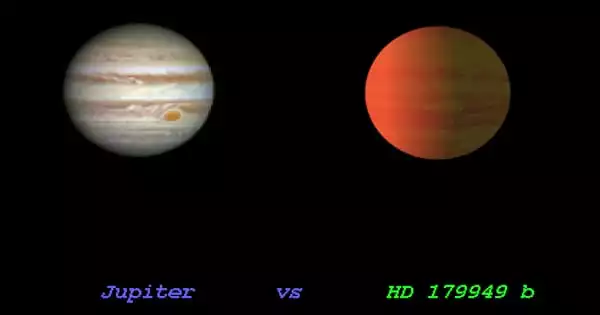Cloud and precipitation behavior on planets other than Earth is poorly understood, but understanding clouds and precipitation is critical for predicting planetary climates and interpreting records of past rainfall preserved on the surfaces of Earth, Mars, and Titan. The behavior of individual liquid precipitating particles is one easily understood component of the clouds and precipitation system (raindrops).
Understanding the behavior of raindrops, according to scientists, could reveal the ancient climate on planets such as Mars. It could also aid scientists in the discovery of potentially habitable planets beyond our solar system.
“The lifecycle of clouds is really important when we think about planet habitability,” said Kaitlyn Loftus, a graduate student in Harvard University’s Department of Earth and Planetary Sciences.
A new study published in the Journal of Geophysical Research: Planets is a first step toward a generalized theory of how precipitation and condensible cycles operate in planetary conditions different from modern Earth.
“However, clouds and precipitation are extremely complicated and impossible to completely model.” “We’re looking for simpler ways to understand how clouds evolve, and one first step is determining whether cloud droplets evaporate in the atmosphere or fall to the ground as rain.”
“The humble raindrop is an essential component of the precipitation cycle for all planets,” said Dr. Robin Wordsworth of Harvard’s John A. Paulson School of Engineering and Applied Sciences. “We can better represent rainfall in complex climate models if we understand how individual raindrops behave.”
The presence of water in the atmosphere has a significant impact on global climate. That is why whether or not a raindrop reaches the planet’s surface is an important aspect of raindrop behavior. To that end, size is important. If the drop is too large, it will break apart due to insufficient surface tension, whether it is water, methane, or superheated, liquid iron, as on the exoplanet WASP-76b. If the drop is too small, it will evaporate before reaching the surface.
Loftus and Dr. Wordsworth’s paper demonstrates how to calculate three key properties that characterize raindrops: their shape, their falling speed, and the rate at which they evaporate. “Drop shapes are the same across different rain materials and are primarily determined by drop weight,” they explained.

Using only three properties: drop shape, falling speed, and evaporation speed, scientists identified a Goldilocks zone for raindrop size. Taking all of these factors into account, scientists discovered that, under a wide range of planetary conditions, the math of raindrop falling means that only a tiny fraction of the possible drop sizes in a cloud can reach the surface.
“The insights we gain from thinking about raindrops and clouds in diverse environments are critical to understanding exoplanet habitability,” wrote Wordsworth. In the long run, they can also help us gain a better understanding of the Earth’s climate.”
“While many of us envision a tear-shaped droplet, raindrops are actually spherical when small, becoming squashed as they grow larger until they transition into a shape similar to the top of a hamburger bun.”
“Falling speed is determined by this shape, gravity, and the thickness of the surrounding air.” “The rate of evaporation is more complicated, influenced by atmospheric composition, pressure, temperature, relative humidity, and other factors.”
Taking all of these properties into account, the researchers discovered that the math of raindrop falling means that only a very small fraction of the possible drop sizes in a cloud can reach the surface across a wide range of planetary conditions.
Loftus explained, “We can use this behavior to guide us as we model cloud cycles on exoplanets.” “The insights gained from thinking about raindrops and clouds in various environments are critical to understanding exoplanet habitability,” Dr. Wordsworth added. “In the long run, they can also help us gain a better understanding of the Earth’s climate.”
A crucial aspect of raindrop behavior, at least to climate modelers, is whether or not the raindrop reaches the planet’s surface, because water in the atmosphere has a large impact on planetary climate. To that end, size is important. If the drop is too large, it will break apart due to insufficient surface tension, regardless of whether it is water, methane, or superheated liquid iron, as on the exoplanet WASP-76b. If the drop is too small, it will evaporate before reaching the surface.
Loftus and Wordsworth discovered a Goldilocks zone for raindrop size by combining three variables: drop shape, falling speed, and evaporation speed.















